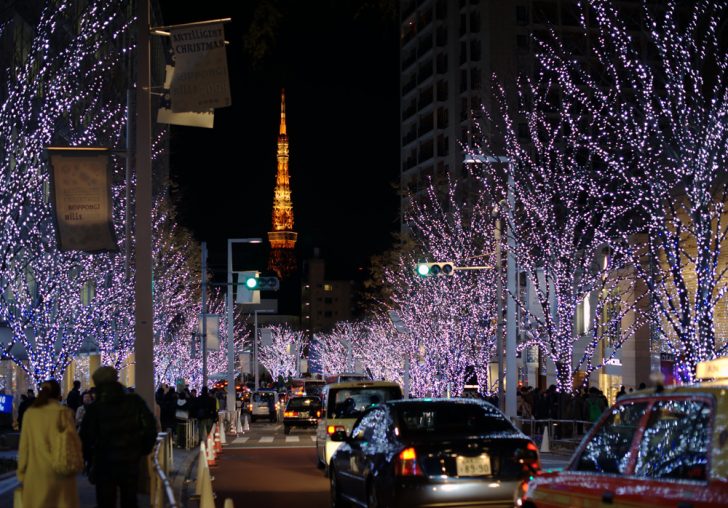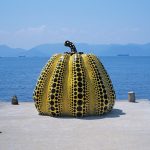Finding the right place to live can be key to enjoying Tokyo
The foreigner that manages to arrive in Tokyo and find themselves in the perfect district straight away is a rare breed. Many have horror stories of ending up on the wrong side of the tracks, finding themselves in cramped housing that becomes too uncomfortable after only a few months, or living in an area that has nothing but a convenience store.
But Tokyo and its surrounding areas have a lot to offer residents. Whether you want to party all night, relax in greenery, shop until you drop or enjoy food and drink in funky surroundings, there is something around the capital for you.
SHIBUYA
 Long famed as a culture capital within Tokyo, Shibuya has in recent times suffered a bit of a downturn. The closure of a number of famous stores and bars — including Japan’s flagship HMV record store — has left Shibuya a more difficult place to negotiate. But put the time in.
Long famed as a culture capital within Tokyo, Shibuya has in recent times suffered a bit of a downturn. The closure of a number of famous stores and bars — including Japan’s flagship HMV record store — has left Shibuya a more difficult place to negotiate. But put the time in.
“There a lot of single people in their 20’s living in Shibuya,” says Jorge Suzuki, a 28-year-old salesman living in the area. “The percentage of families is relatively small compared with other wards because living costs are quite high, and in most locations facilities such as low cost supermarkets are not available”.
As well as a plethora of hidden restaurants, quality fashion stores and funky bars in dirty back streets, Shibuya also has the added bonus of being convenient for commuters, with train lines going across the city from its station and the likelihood of getting a seat on all but the Yamanote Line quite high. Aoyama, Harajuku and Daikanyama are all within walking distance and remain popular with the city’s more fashionable residents.
“Living here helps you to maintain a good social life, meet new people and enjoy life in Tokyo overall,” says Suzuki. “It’s also close to Yoyogi park which is a good getaway for the weekends and a place were constant events take place. But the noise makes it a difficult to relax here.”
ROPPONGI/HIROO
 Perhaps Tokyo’s most famous nighttime district, Roppongi has seen its share of incidents over the years. In Robert Whiting’s Tokyo Underworld, Roppongi is as big a character in the book as any person, and not without reason. The area is famed for its Saturday night sleaze, but also for its classy restaurants, high-end stores and international community close by in Hiroo. “It is a very international part of Tokyo, so I guess the die-hard Japanophile would shy away,” says Vidar Anundsen, a Norweigian recruiter in his 20s living in the area. “But if you don’t mind seeing other foreigners on the street, the area would appeal to anyone from families with small kids to students”
Perhaps Tokyo’s most famous nighttime district, Roppongi has seen its share of incidents over the years. In Robert Whiting’s Tokyo Underworld, Roppongi is as big a character in the book as any person, and not without reason. The area is famed for its Saturday night sleaze, but also for its classy restaurants, high-end stores and international community close by in Hiroo. “It is a very international part of Tokyo, so I guess the die-hard Japanophile would shy away,” says Vidar Anundsen, a Norweigian recruiter in his 20s living in the area. “But if you don’t mind seeing other foreigners on the street, the area would appeal to anyone from families with small kids to students”
Roppongi is essentially what you make it: Go out and get very drunk in the foreign haunts that dot the area and you are likely to walk away with either bad memories or no memory at all — and a bad hangover. Alternatively, utilise the area’s plus points: Roppongi Hills and Tokyo Midtown are now seen as some of the best areas for shopping in the city, art galleries here offer some of the best exhibitions in the city and foreign supermarkets, cinemas and classy restaurants mean that as long as you have money in your pocket, you will understand why the rent is so high and consider it money well spent.
“I like it for the hills with small side streets and the low rise buildings, which make it a nice area for strolling,” says Anundsen. “There are also a lot of good bars and restaurants here.”
SHIMOKITAZAWA
 Long a favorite with students, Shimokitazawa offers residents a plethora of record stores, night clubs, live music venues, reasonably priced restaurants and enough bargains to guarantee a day’s shopping will not be enough.
Long a favorite with students, Shimokitazawa offers residents a plethora of record stores, night clubs, live music venues, reasonably priced restaurants and enough bargains to guarantee a day’s shopping will not be enough.
The area’s residents are a mixture of hipsters, students, long-term residents and well-paid people from artistic professions. Don’t be surprised to overhear conversations between authors, graphic designers and drunk 20 somethings in bars on a Saturday night. While areas such as Shibuya and Roppongi may be a little upmarket, Shimokitazawa is hard to beat for its culture and “small town within a town” feel.
“It’s a great area for laid back people,” says Yuko Murano, an office worker and Shimokitazawa resident. “It’s also really convenient for getting to places, and the mixture of old and new buildings makes the area interesting. On any given night, you can find something to do because there are so many small, independent stores in the area.”
The one drawback: The government is planning to dump a highway straight through the middle of the city, much to the chargrin of residents.
THE SUBURBS
 Of course, there are drawbacks to living in the big smoke. Overcrowding, overpricing and overdoses of neon are all common complaints of Tokyo residents. Japan is, however, away from its densely populated city centers, a country of beautiful countryside with a huge and efficient agricultural sector. Since the end of the bubble era, it has also seen land prices out of cities drop to, well, affordable levels.
Of course, there are drawbacks to living in the big smoke. Overcrowding, overpricing and overdoses of neon are all common complaints of Tokyo residents. Japan is, however, away from its densely populated city centers, a country of beautiful countryside with a huge and efficient agricultural sector. Since the end of the bubble era, it has also seen land prices out of cities drop to, well, affordable levels.
As Patrick Sherriff, 39, a business owner living in Abiko, Chiba Prefecture, says: “Land is cheaper and therefore housing is too. We can afford to own a house here in an older neighbourhood, which would be impossible for us anywhere in Tokyo.
“You can see the sky, plants and greenery. We also happen to have a lake five minutes walk from our house, again impossible in Tokyo. The air is cleaner, there is literally more room to breathe. But perhaps the biggest plus is we know our neighbours. In Tokyo, you are surrounded by strangers. Here there are fewer people and therefore a sense of community absent from my time as a mansion-renter in Tokyo.”
While Sherriff admits that life outside the city is not quite as exciting, he would not want to move into a more central area. “Invariably, on days out in Tokyo it’s a real relief to escape the crowds and come back home to Abiko.”
THE CHUO LINE
 The Ghibli Museum, a plethora of live music venues, plenty of parks and cities that appeal to music collectors, bargain hunters and heavy drinkers make the Chuo Line popular with young and old alike. Young families, students and salarymen rub shoulders in the standing bars and music venues in dingy basements that dot the area.
The Ghibli Museum, a plethora of live music venues, plenty of parks and cities that appeal to music collectors, bargain hunters and heavy drinkers make the Chuo Line popular with young and old alike. Young families, students and salarymen rub shoulders in the standing bars and music venues in dingy basements that dot the area.
Musashi Sakai resident Alex Cox, 31, a language school manager, has lived on the Chuo Line for around three years, and claims it offers a convenient escape from Tokyo with all the essentials that a resident needs. “Musashi Sakai is a leafy suburban area, and as such young families would find it suitable,” he says. “(It has) good access for work, plenty of schools and hospitals, supermarkets and places to eat out.”
The area does, however, have drawbacks, with prices rising and the Chuo Line notorious for its regular breakdowns and commuters packed in like sardines. “Due to the popularity of the Chuo Line, the cost of apartments has escalated – but despite that I can’t remember an uncrowded train.”
It’s convenience, however, remains more alluring than the disadvantages of the area. “Relaxing in greenery is just as easy as heading into the city for a hectic night out,” says Cox.
From J SELECT Magazine, January 2011
















Recent Comments